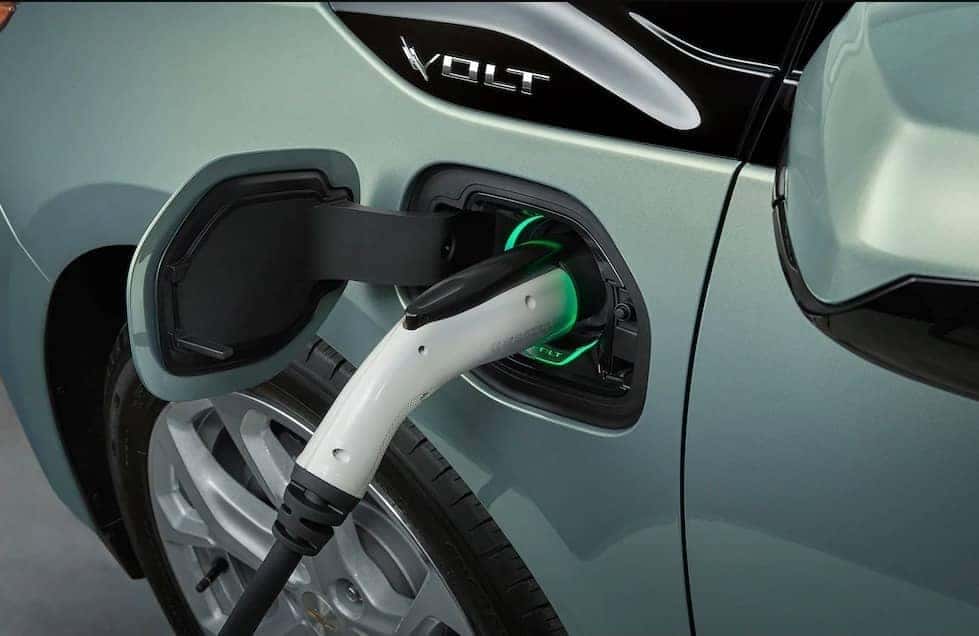

The Chevrolet Volt is smooth-lined and sleek, stylish from any angle, a little plasticky when seen from the rear. So, while those first 80-plus kilometres every day were hardly “free”, they certainly come at a lower cost than fuelling even the best gas-powered econo car.

It takes about 13 kWh to recharge the battery (there’s a bit of a buffer built in), so plugging in at my local off-peak rate of $0.077 per kWh worked out to about a dollar a day. Recharging takes about 13 hours via a standard 120V plug or 4.5 hours using a 240V outlet. So, how much does it cost to recharge the car electrically? Plug in overnight, however, and some owners could easily attain a 0L/100km average for weeks or even months.
#Chevy volt range per charge driver#
It’s hard to rate the fuel economy of a car that is so dependent on driver demands, distances and recharge availability.ĭrive it without ever plugging in and the four-cylinder range extender earns 5.5/5.6L/100km (city/hwy). My session came in close, averaging 3.5L/100km (comb) over 500 km, which, umm, included one time when I forgot to plug in overnight. Picking up the Volt, I noted that the previous tester had managed a 3.2L/100km (comb) over 430 km. It removes any worry about “running out of juice”.Īlso Read: Ioniq charges up Hyundai’s electric future My daily driving routine as a news photographer usually averages more than 100 km and this is where the range extending strengths of the Volt comes into play. The Volt’s enhanced 85 km range fits well within those parameters. Most commuters in Canada take the car for a less than 30-minute commute and usually also less than 30 kilometres one way. Technological evolution may be inevitable but GM engineers maintain that the modifications to the Volt were made in response to customer feedback, which mainly reflected on the immense satisfaction of gasoline-free driving. ∙ New location-based charging and driver control changes. ∙ New five-passenger seating layout with available rear heated seats. ∙ New braking system with improved Regen feel. ∙ New Regen on Demand control paddles on back of steering wheel. ∙ New structural changes for a quieter ride.

∙ New 1.5-litre (up from 1.4-litre) range extending gas engine/generator, now running on regular octane instead of premium. ∙ New revised Voltec two-motor electric drive - 45 kg (100 lb) lighter, 12 percent more efficient and 19 percent stronger in 0-50 km/h acceleration. ∙ New battery pack rated at 18.4 kWh instead of 16.5 kWh, with 192 revised cells instead of 288, weight reduced by 9.8 kg (21 lb) and repositioned for a lower centre of gravity. ∙ New 85 km EV-only range (up from 61 km). This original solution to EV “range anxiety” still works, enhanced by the second-generation improvements made for last year’s 2016 models that include: The Volt remains unique as a plug-in hybrid that uses it onboard gasoline engine mainly as an electrical generator. It’s also a time of new beginnings, especially in the auto sector where the annual lineup turnover leaves a mixed bag of 20 models at both dealers and press fleets.Īmong still relevant 2017s, we have to consider the Chevrolet Volt, riding on the coattails of last year’s major makeover and carrying over next year with only minor changes for 2018 - new colours, trim content adjustments and a few added techno tweaks. We have seen prices as low as $19,000 and leases for ~$200.Fall is not just a season to mark the end of things. It can still be difficult to get your hands on one in certain markets, while in other markets, like California, there are decent inventories and some customers have been getting away with paying less than $25,000 after incentives due to discounts.

GM builds the vehicles and sells them to Opel, but they only have limited small allocations per market in Europe. Though GM’s sale of Opel to the PSA Group complicated things. They used the Opel Ampera E, which is the Bolt EV rebranded in Europe, and after driving at speeds mainly between 40 and 50 km/h (25 to 30 mph) for no less than 25 hours and 30 minutes, they ended up with 754.9 kilometers on the odometer when the battery was completely depleted.Īgain, while that’s impressive, it shouldn’t represent the expected range, but it does serve as an example of the vehicle’s potential when efficiently driven.įor comparison, a Tesla Model S 100D drove 670 miles (1,078km) on a single charge – about twice its rated range like this Bolt EV.Īs a small crossover in the price range of $37,500 to $40,000, the Bolt EV, as the Ampera E, was expected to be very popular in Europe. One kilometer at a time: The Opel Ampera-e covered over 750 kilometers on a single charge at leisurely speeds.


 0 kommentar(er)
0 kommentar(er)
